
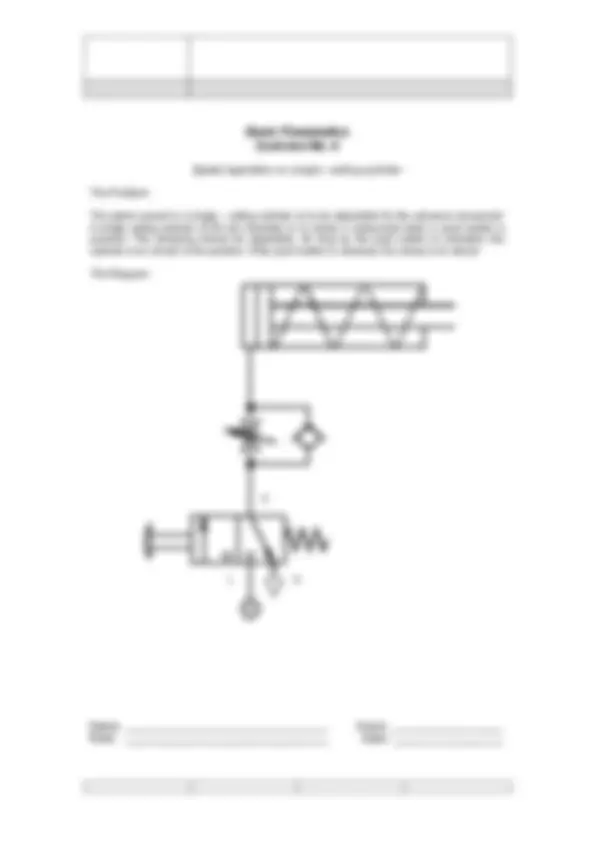
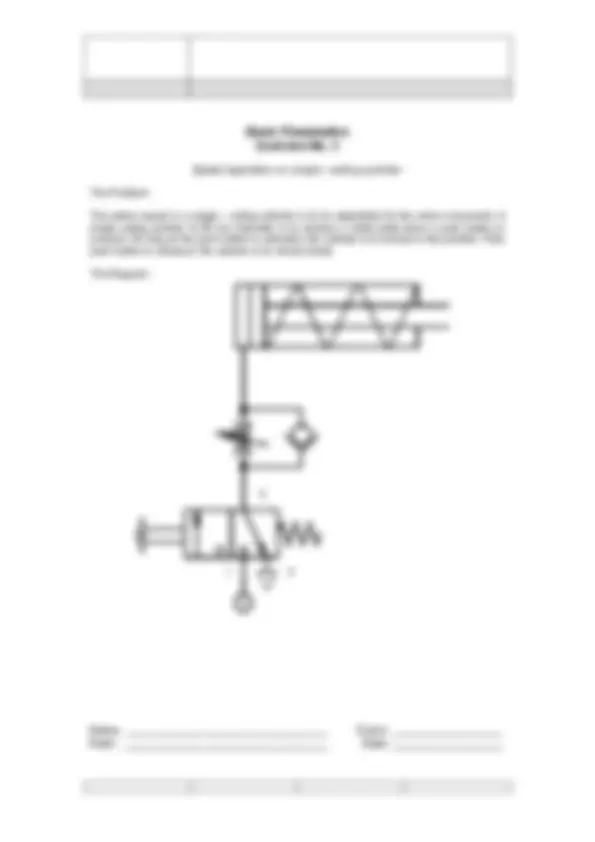
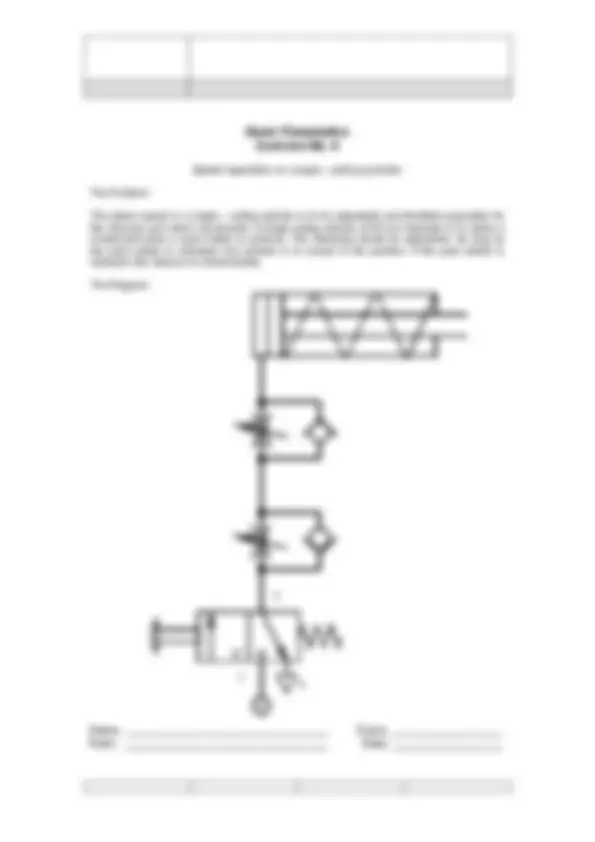
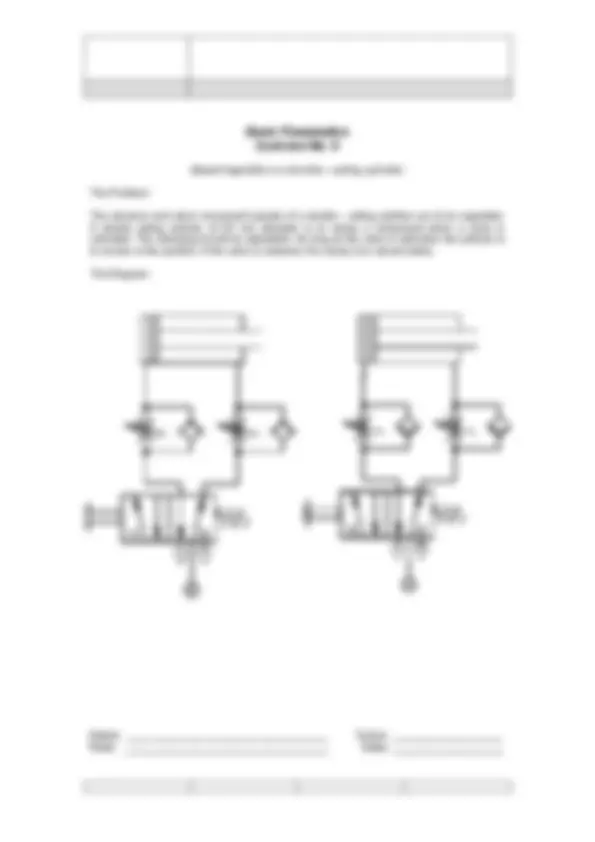
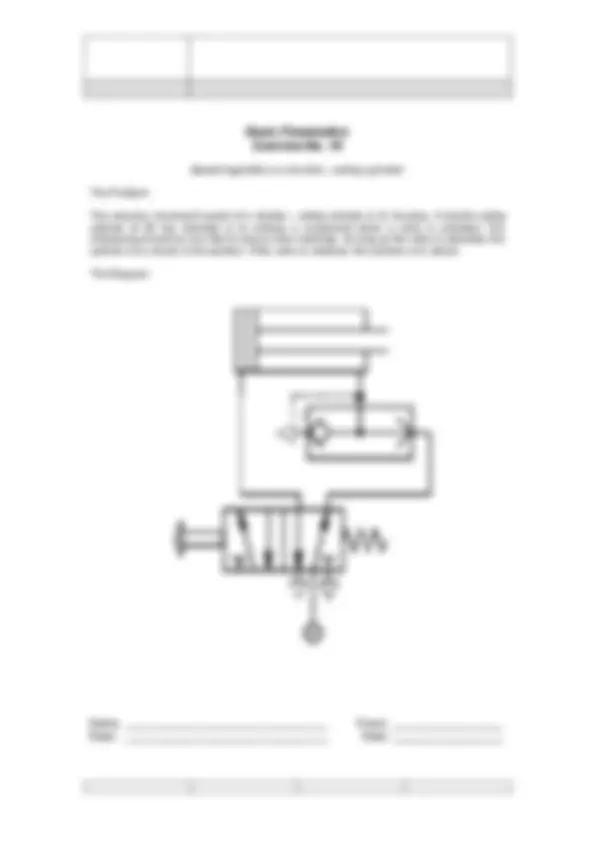
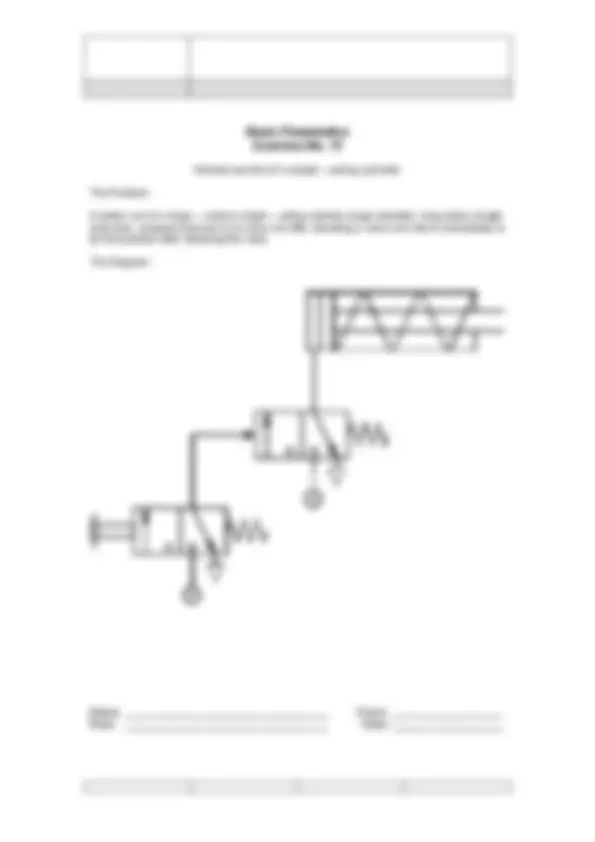
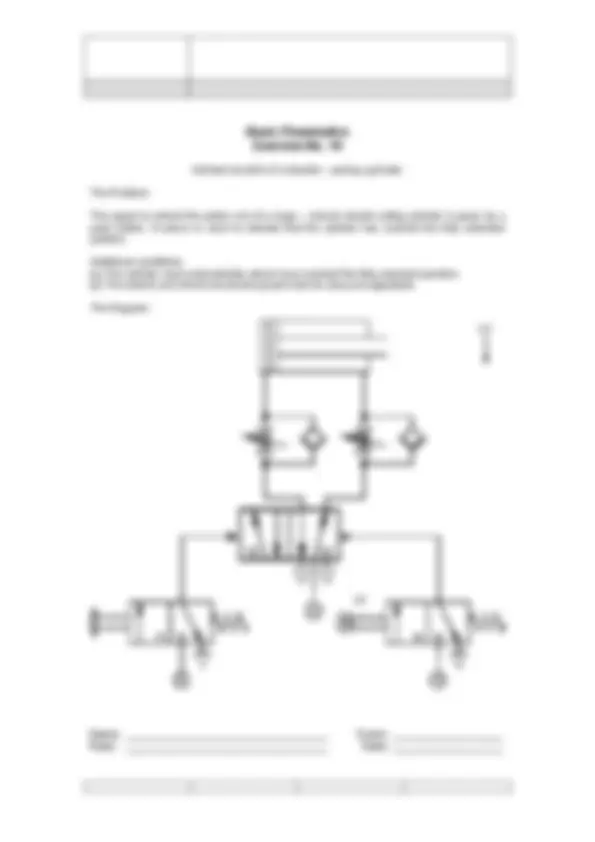
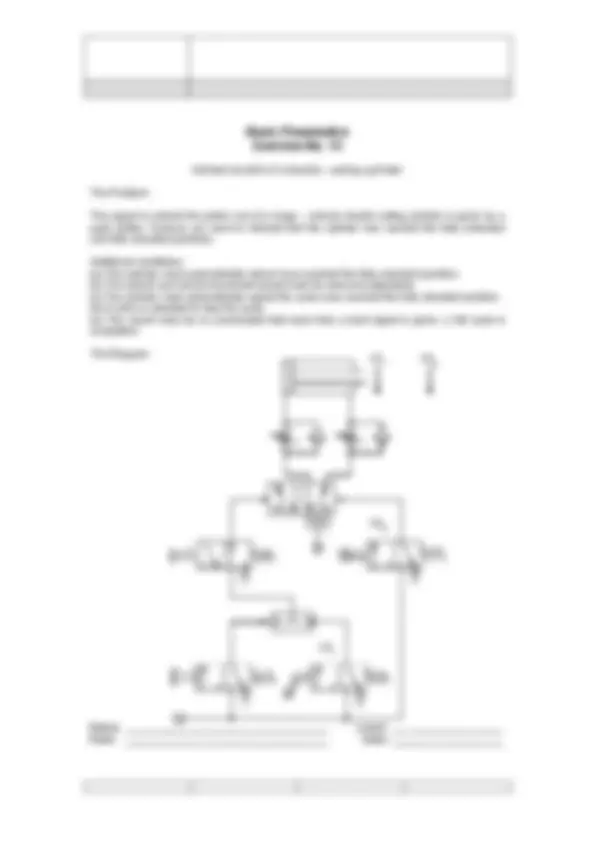
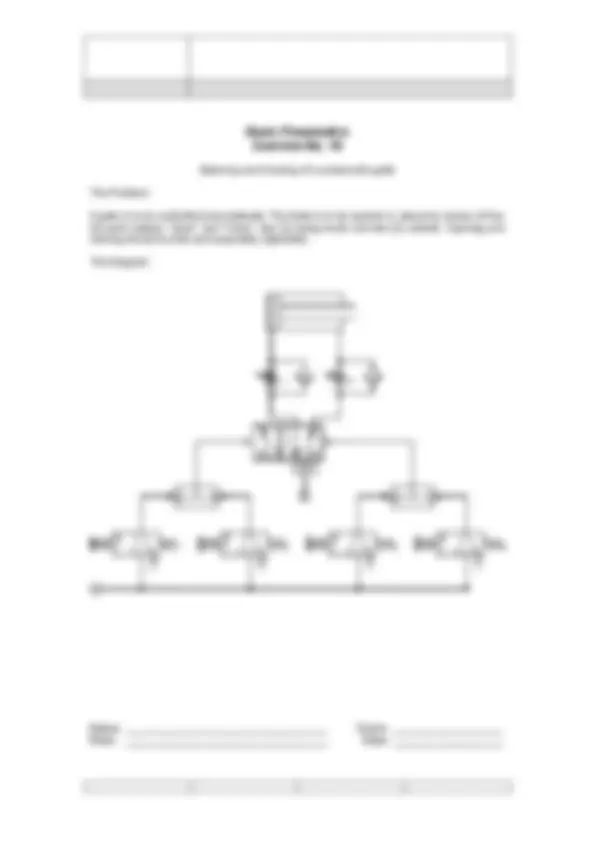
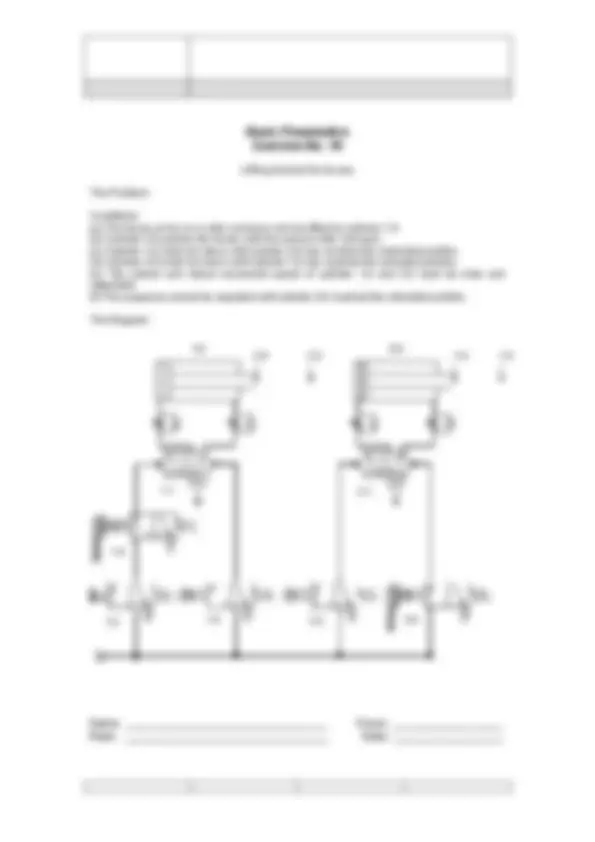
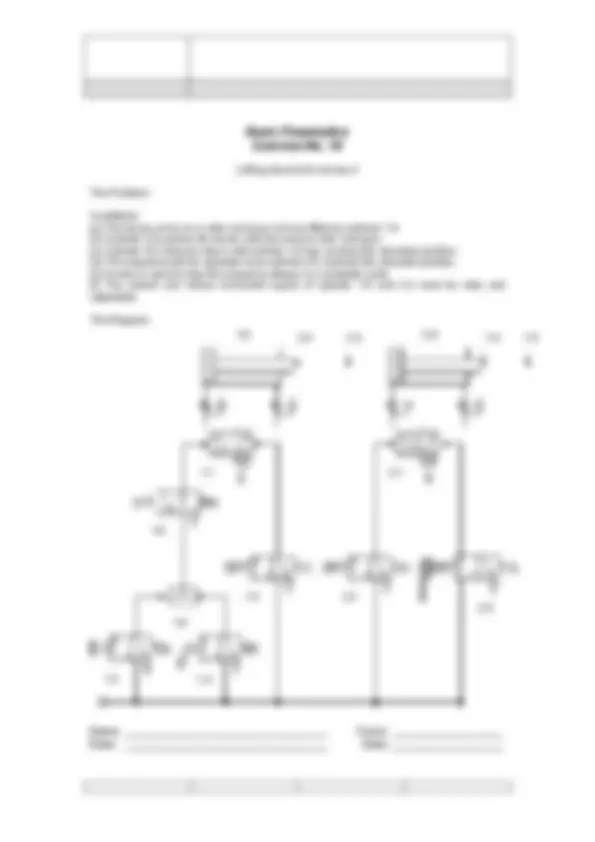
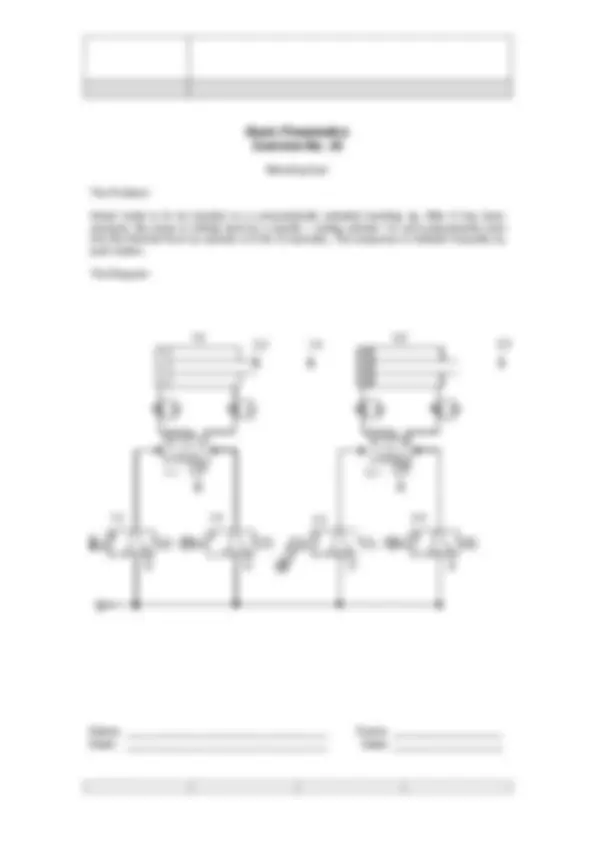
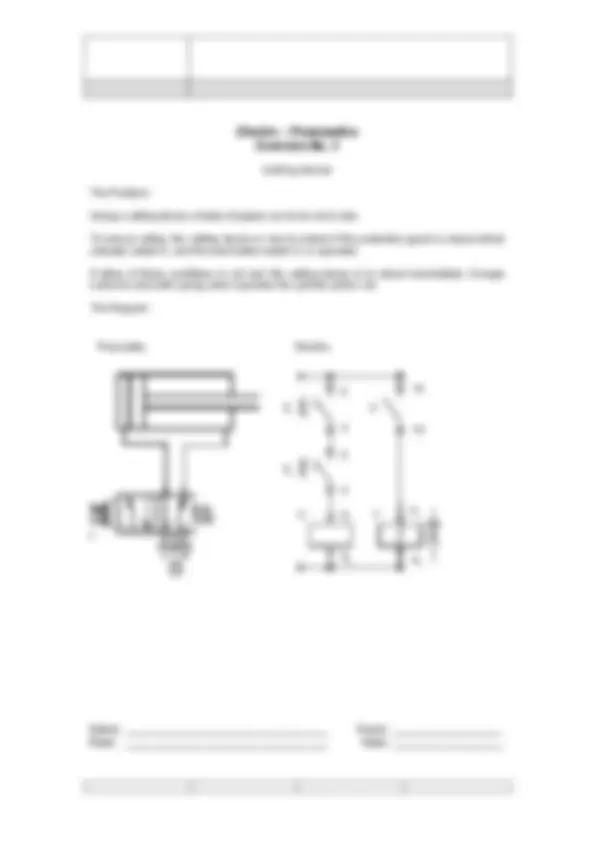
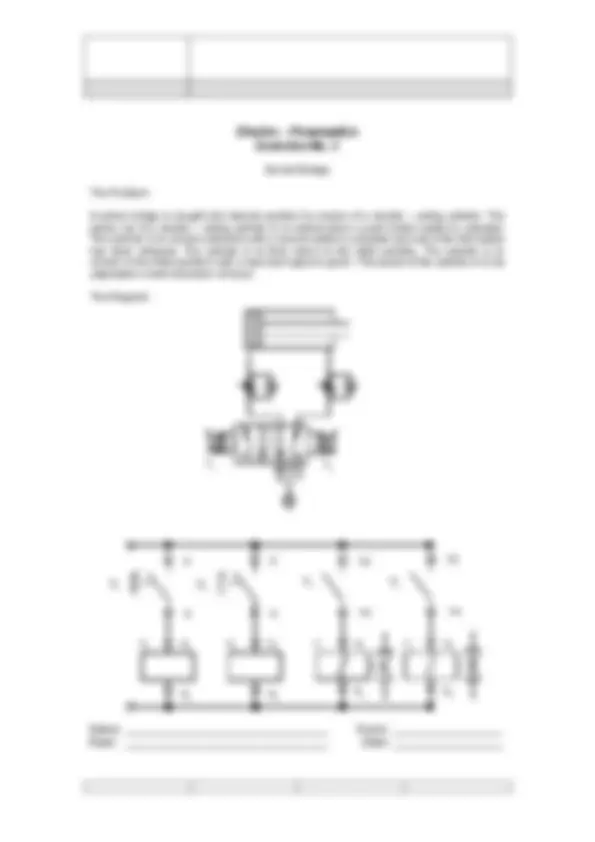
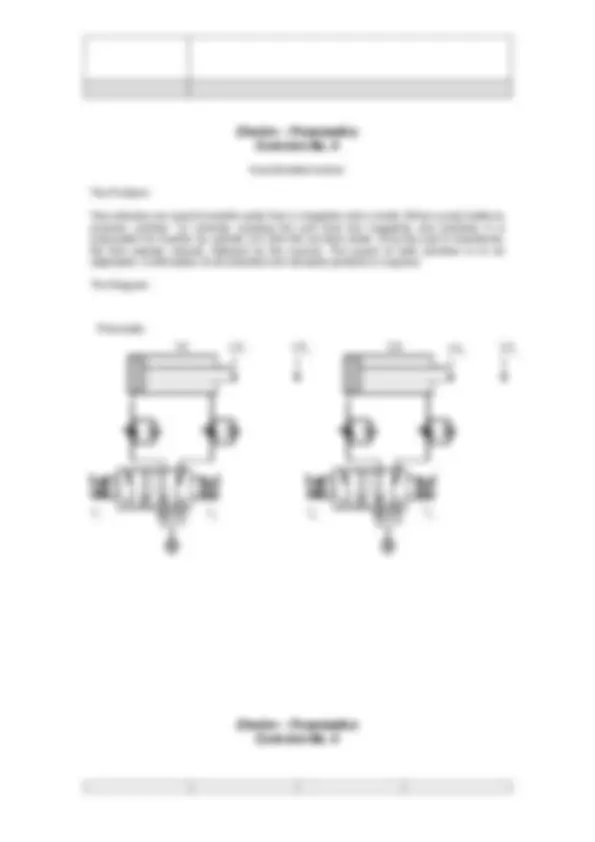
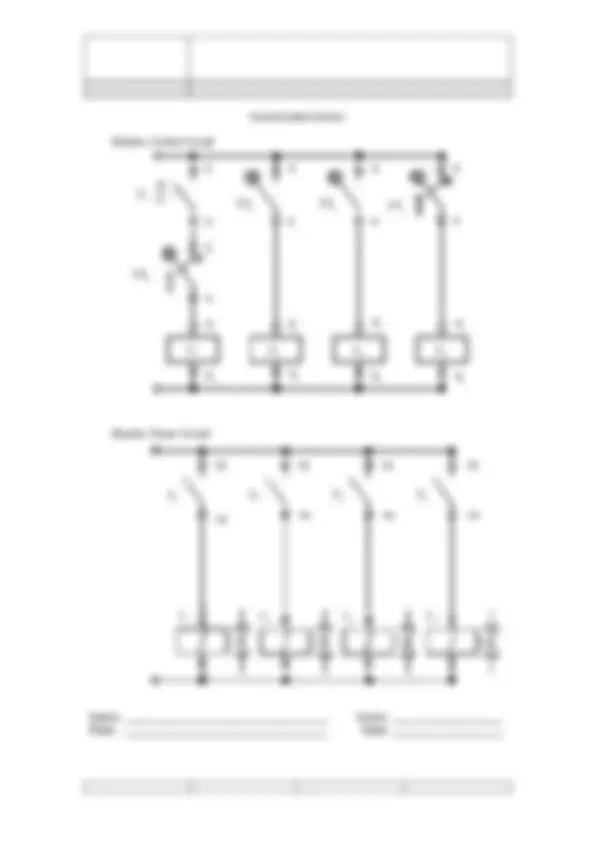
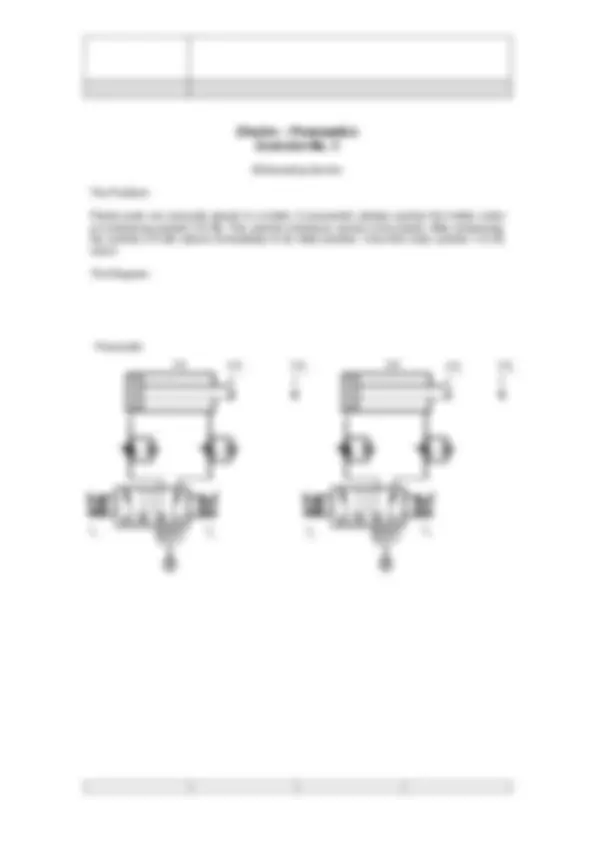
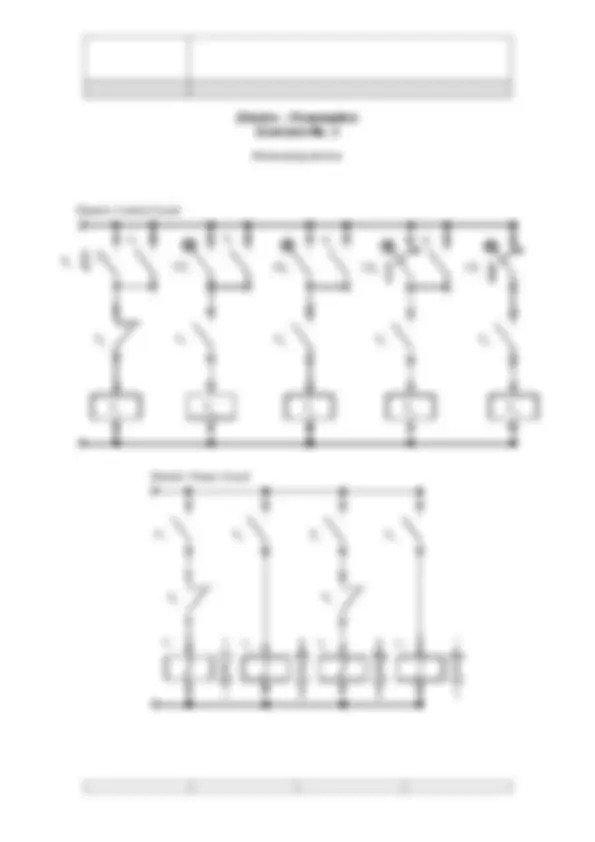


Study with the several resources on Docsity

Earn points by helping other students or get them with a premium plan


Prepare for your exams
Study with the several resources on Docsity

Earn points to download
Earn points by helping other students or get them with a premium plan
Community
Ask the community for help and clear up your study doubts
Discover the best universities in your country according to Docsity users
Free resources
Download our free guides on studying techniques, anxiety management strategies, and thesis advice from Docsity tutors
Pneumatic_Control-Engineering for/you/humans
Typology: Exercises
1 / 26

This page cannot be seen from the preview
Don't miss anything!



















Basic Pneumatics Exercise No. 2
Control of a single – acting cylinder
The Problem:
The movement of a single – acting cylinder is to be affected from two different points. A single acting cylinder of 25 mm diameter is to emboss a metal plate when any of the two push buttons is pressed. As long as the push button is activated, the cylinder is to remain in the position. If the push button is released, the cylinder is to retract.
The Diagram:
Basic Pneumatics Exercise No. 3
Control of a single – acting cylinder
The Problem:
The piston rod of a single – acting cylinder may move out only if two 3 / 2 – way valves are actuated. A single acting cylinder of 25 mm diameter is to emboss a metal plate only if two push buttons are pressed. As long as the two push buttons are activated, the cylinder is to remain in the position. If any of the two push buttons is released, the cylinder is to retract.
The Diagram:
Exercise No. 5
Speed regulation on single – acting cylinder
The Problem:
The piston speed in a single – acting cylinder is to be adjustable for the return movement. A single acting cylinder of 25 mm diameter is to emboss a metal plate when a push button is pressed. As long as the push button is activated, the cylinder is to remain in the position. If the push button is released, the cylinder is to retract slowly.
The Diagram:
Exercise No. 6
Speed regulation on single – acting cylinder
The Problem:
The piston speed in a single – acting cylinder is to be adjustable and throttled separately for the advance and return movements. A single acting cylinder of 25 mm diameter is to clamp a component when a push button is pressed. The clamping should be adjustable. As long as the push button is activated, the cylinder is to remain in the position. If the push button is released, the clamp is to retract slowly.
The Diagram:
Exercise No. 8
Control of double – acting cylinder
The Problem:
The piston rod of a double acting cylinder is to move out or in by switching a valve. A double acting cylinder of 25 mm diameter is to emboss a metal plate when a valve is switched. As long as the valve is activated, the cylinder is to remain in the position. If the valve is released, the cylinder is to retract.
The Diagram:
Exercise No. 9
Speed regulation on double – acting cylinder
The Problem:
The advance and return movement speeds of a double – acting cylinder are to be regulated. A double acting cylinder of 25 mm diameter is to clamp a component when a valve is activated. The clamping should be adjustable. As long as the valve is activated, the cylinder is to remain in the position. If the valve is released, the clamp is to retract slowly.
The Diagram:
Exercise No. 11
Indirect control of a single – acting cylinder
The Problem:
A piston rod of a large – volume single – acting cylinder (large diameter, long stroke length, long lines, unequal pressure) is to move out after actuating a valve and return immediately to its end position after releasing this valve.
The Diagram:
Exercise No. 12
Indirect control of a double – acting cylinder
The Problem:
A piston rod of a large – volume double – acting cylinder (large diameter, long stroke length, long lines, unequal pressure) is to move out after actuating a valve and return immediately to its end position after releasing this valve.
The Diagram:
Exercise No. 14
Indirect control of a double – acting cylinder
The Problem:
The signal to extend the piston rod of a large – volume double acting cylinder is given by a push button. A sensor is used to indicate that the cylinder has reached the fully extended position.
Additional conditions: (a) The cylinder must automatically retract once reached the fully extended position. (b) The extend and retract movement speed must be slow and adjustable.
The Diagram:
Exercise No. 15
Indirect control of a double – acting cylinder
The Problem:
The signal to extend the piston rod of a large – volume double acting cylinder is given by a push button. Sensors are used to indicate that the cylinder has reached the fully extended and fully retracted positions.
Additional conditions: (a) The cylinder must automatically retract once reached the fully extended position. (b) The extend and retract movement speed must be slow and adjustable. (c) The cylinder must automatically repeat the cycle once reached the fully retracted position. (d) A valve is actuated to stop the cycle. (e) The circuit must be so constructed that each time a start signal is given, a full cycle is completed.
The Diagram:
Exercise No. 17
Lever clamp with drill
The Problem:
The clamping of a work piece is to be controlled by a push button. A further push button is to control de – clamping.
Additional conditions: (a) Clamping is only to be possible when a work piece is present. (b) The clamping speed is to be slow and adjustable. (c) De – clamping is to be interlocked during drilling. (d) The drilling speed is to be slow and adjustable. (e) De – clamping is to be very fast.
The Drill Diagram:
Basic Pneumatics Exercise No. 17
Drill Sensor l
Work Piece Sensor l
Work Piece Sensor (^) Drill Sensor
De - clamp
Clamp
Exercise No. 19
Lifting device for boxes 2
The Problem:
Conditions: (a) The boxes arrive on a roller conveyor and are lifted by cylinder 1.0. (b) Cylinder 2.0 pushes the boxes onto the second roller conveyor. (c) Cylinder 2.0 shall not return until cylinder 1.0 has reached the retracted position. (d) The sequence will be repeated once cylinder 2.0 reached the retracted position. (e) A valve is used to stop the sequence always in a complete cycle. (f) The extend and retract movement speed of cylinder 1.0 and 2.0 must be slow and adjustable.
The Diagram:
Exercise No. 20
Bending tool
The Problem:
Sheet metal is to be beaded on a pneumatically actuated bending rig. After it has been clamped, the piece is initially bent by a double – acting cylinder 1.0 and subsequently bent into the finished form by cylinder 2.0 (for 5 seconds). The sequence is initiated manually by push button.
The Diagram: